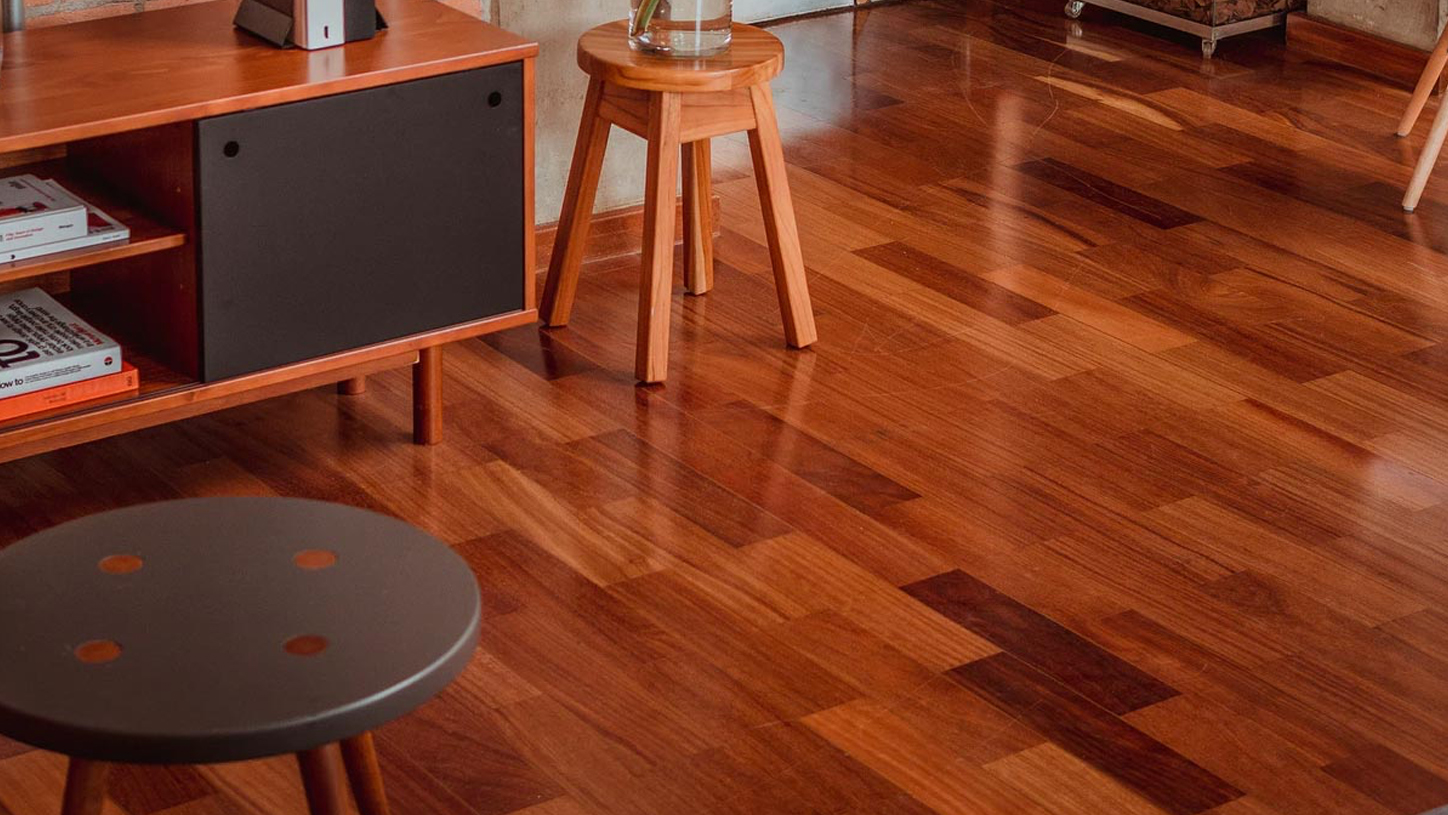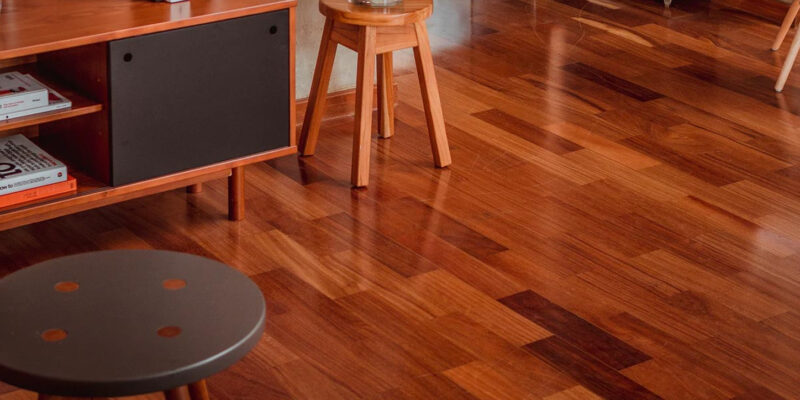
The Science Behind Wood Floor Adhesives
Engineered hardwood flooring can be installed on all types of subfloors and has become especially popular due to its inherent structural stability. In order to have a successful wood flooring installation, it helps to understand the types of wood flooring adhesives and how they work. This requires an understanding of both chemistry and bonding; here’s a short primer.
The task of wood floor adhesives is to firmly bond the organic wood floor elements to the generally inorganic screed. The adhesive must hold the wood in place, connect it to the underlying screed and transfer stress originating from the natural expansion and contraction of the wood to the generally rigid screed. The undesired but natural movement of the wood can become visible in cupping, joint formation, or in extreme situations failure of the adhesive or screed.
Three Main Wood Floor Adhesives
There are basically three types of adhesive chemistries: Modified Silicone Polymers (or MS+), Polyurethanes, and Acrylics. Each has its place, and in order to understand how they work, you must first understand this: An adhesive can create a chemical or mechanical bond. A chemical bond is when molecule A combines with molecule B to form a new molecule, C. A mechanical bond consists of molecules interlocking but not chemically changing. Both types of bonds can be quite strong.
MS+
Modified silicone polymers are considered hybrids. They create a mechanical bond with wood, penetrating into the cell structure. However, should the adhesive end up on top of the finished wood, the outcome is quite different. The MS+ will not bond well to this coated surface and will clean off easily, giving MS+ adhesives excellent long-term cleanability. With concrete, MS+ products form a chemical bond. MS+ polymers are unaffected by water when cured. They are also typically zero-VOC and therefore very ecologically friendly.
Polyurethanes
Polyurethanes combine with the wood’s lignin, made of complex chemical compounds that form parts of the cell structure, to create a chemical bond. Polyurethanes also create a mechanical bond with concrete. They are enormously strong and form an elastic bond. These adhesives are unaffected by water when cured. The biggest drawback is that a polyurethane adhesive can also form an incredibly strong chemical bond with the polyurethane finish on topof the wood flooring. This makes trying to clean that spot on top of the floor you didn’t notice during installation an absolute nightmare. They must be cleaned when wet. Polyurethanes generally contain diisocyanates and solvents, and are considered low-VOC.
Acrylic
Acrylic adhesives usually consist of polyvinyl acetate emulsions. (They are also sometimes called “latex,”but the correct term is “acrylic.”) Acrylic adhesives are highly filled polymer dispersions in water. The typical curing occurs when the water leaves the dispersion with the help of solvents. The polymers coalesce, or fuse, thus creating a particle entanglement or matrix. crylic adhesives are highly susceptible to moisture and usually require a flashing off period prior to floor installation. They clean off easily with water because of this, but will fail easily in a wet environment. When installed properly, they are an effective, proven option for engineered floors.Unlike the other two adhesives, which are waterproof at full cure, acrylic adhesives are always susceptible to dilution from water or water vapor. On the plus side, acrylics do have a re-bonding capacity. Lastly, acrylic adhesives generally are low-VOC, and contain solvents.
Shear Strength
Shear strength of flooring adhesives is also an important factor ro be considered. It is a scientific measurement of the amount of pressure required to move an object from its starting position. When applied to the holding or bonding strength of a wood floor adhesive, it is measured in pounds per square inch (PSI). That is the force required to dislodge flooring from the sub floor. It also refers to the amount of force that can cause cupping or end lifting. In general, the higher the PSI, the stronger and longer-lasting the adhesive bond will be. This means that over the lifetime of a wood floor, as it is continually exposed to changes in moisture content, relative humidity and temperature, it will stay flatter and more securely bonded when the PSI is higher. You can imagine how helpful that will be when there is a particularly wet season and your doors swell shut, windows refuse to open, and drawers won’t close. Your wood floor is suffering from the same stresses and the quality of the adhesive is the only thing that will reduce cupping and prevent it from coming loose.
The task of wood floor adhesives is to firmly bond the organic wood floor elements to the generally inorganic screed. The adhesive must hold the wood in place, connect it to the underlying screed and transfer stress originating from the natural expansion and contraction of the wood to the generally rigid screed. The undesired but natural movement of the wood can become visible in cupping, joint formation, or in extreme situations failure of the adhesive or screed.
Classes of Adhesives for Wood Floor Bonding
Wood floor adhesives are characterized by their performance under shear stress which closest corresponds to the situation when they are installed and connecting the wood to the screed. There are 3 classes of adhesives for wood floor bonding:
Hard Adhesives
Generally these can only partially accommodate movement of the wood, therefore the stress of this is transferred directly to the screed. If the screed is not sufficiently strong, it will fail and break within the screed. If the adhesion is not strong enough there will be adhesive failure at the interface.
Hard-Elastic Adhesives
These are a compromise with some of the advantages of both hard and elastic adhesives. Strong enough to limit movement of the wood and elastic enough to absorb and accommodate stress evenly to the screed. This type of hard-elastic adhesives are recommended for bonding large massive wood plank flooring.
Elastic Adhesives
These elastic adhesives are now very commonly used to bond engineered wood floors, as well as smaller solid natural woods with limited movement. Elastic adhesives are the best solution to absorb and accommodate stress from the wood to the screed, whilst only partially restricting the natural movement of the wood.
Non-Reactive Wood Floor Adhesives
Water based (also called dispersions), or solvent based adhesives cure to rigid thin films by losing their liquid carrier medium. Water is released into the screed and the wood, whereas solvents mostly evaporate into the air. Water and solvent based adhesives are older technologies and seldom used commercially to any extent today due to their limitations with wood and screeds, plus their EHS/VOC issues. However these types of adhesives were in widespread use before modern reactive adhesives became better known and well proven, but they are still available, though apart from their low cost there are no real benefits in using them today.
Reactive Wood Floor Adhesives
Wood floors are generally installed using reactive adhesives today because these technologies have several important advantages:
- Ease of use, characterized by optimum open times, pourand spread-ability, trowel stability, odor, clean-ability and others.
- Thick film application, making it possible to compensate unevenness like with a levelling mortar and thereby saving time.
- Initial grab, needed to hold the wood in place until the adhesive is cured.
- Especially when laying larger wooden planks which are never perfectly plane this initial grab is essential.
- Wide application range with regard to overlaying different screeds and for laying different types of wood and different wood dimensions.
- Curing time after which the wood floor can be walked on and further treated if required (e.g. sanding, polishing or varnishing etc.).
- Security, that the bond and the system build-up (screed-adhesive-wood) are stable. This means that the movement of the wood is restricted, preventing cupping and gap formation; additionally stress is accommodated and absorbed in the adhesive layer, protecting the screed from stress cracking and preventing adhesive and cohesive failures in the system.
Reactive adhesives cure after application into a stable polymer network. The initially viscous liquid becomes a solid with elastic to hard mechanical properties, depending on the density of the polymer network. There are one and two component reactive adhesives:
One Component Adhesives
In one component adhesives the surrounding humidity drives the polymerisation of the adhesive. Therefore the setting times (skin time) and cure times depend on the humidity, the surrounding temperature and the adhesive thickness, as these adhesives cure from the outside to inside. Therefore at lower temperatures and correspondingly dryer air, the reaction is slower, whereas in hot and humid climates the reaction is faster and both skinning and cure times are therefore reduced/faster.
Two Component Adhesives
With two component adhesives the reaction starts when the two components are mixed together. The cure time is defined according to the type and nature of the hardener and the surrounding temperature. Once both components are thoroughly mixed together in the appropriate amounts, these systems are very robust and reliable.
Wood Floor Installation Methods
There are several ways to install a wood floor. The most common methods are traditional mechanical fixing, full surface bonding, cordon (strip) bonding, and the so-called floating installations. Generally speaking today, the best way to install a wood floor is always going to be using full surface bonding of the wooden planks / elements to the screed or other substrate. Due to its apparent ease and simplicity, plus the extensive availability of engineered wood in retail there are a lot of do-it-yourself installations, but all of these have serious disadvantages and are probably more decorative than durable. This approach and these products are therefore not recommended for professionals, quality residential, public or commercial applications.





